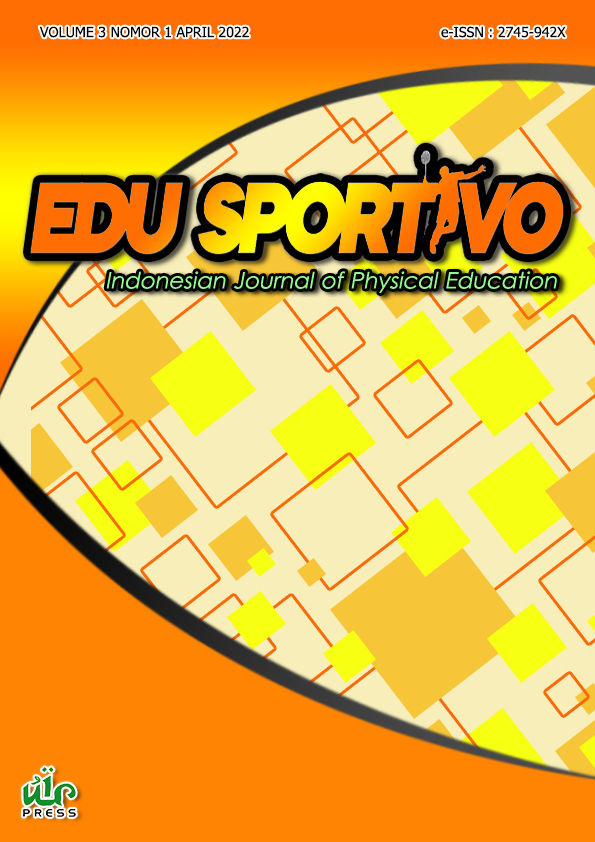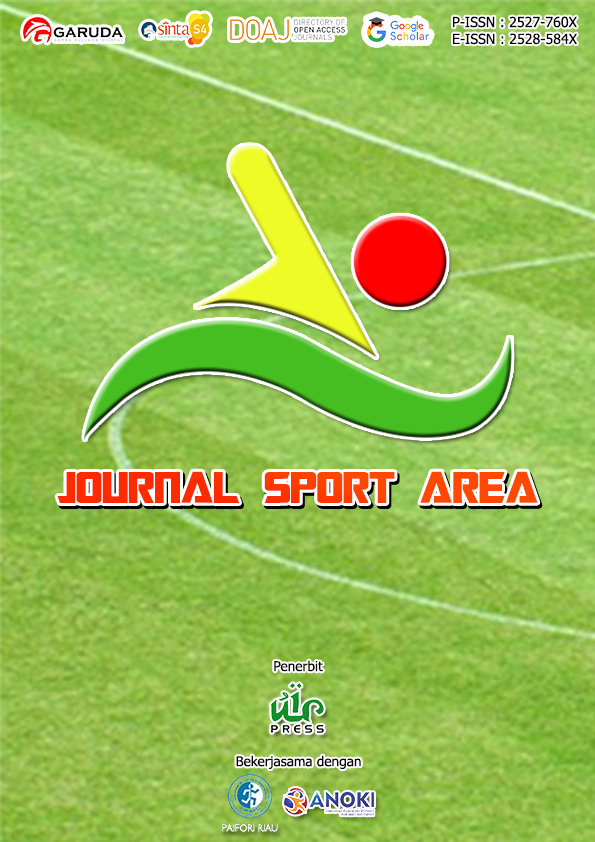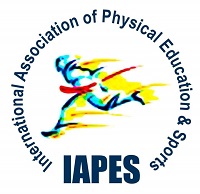Knowledge and readiness of filipino physical educators in addressing injuries in physical education settings
Keywords:
Demographic profile, experiences, first aid, injury prevention, physical educationAbstract
In school, there are a lot of lesson, skills and experiences that may took place. It is inevitable to encounter unexpected certainties during class hours, especially during Physical Education classes. There are a lot of unexpected certainties like injuries that may took place, the latter may deprove the students in attaining the knowledge and skills they may acquired during their physical education classes. Moreover, it is the teacher's primary role to keep the students safe from any harm. Thus, this study aimed to assess the knowledge and readiness of Filipino Physical Educators in addressing injuries in Physical Education settings. This mixed-method sequential explanatory research considered twenty (20) physical educators of a state-funded higher education institution were selected for the quantitative phase. Four (4) of them were selected in the qualitative phase via extreme case sampling that measured their demographic profile, knowledge, readiness, and experiences in first aid management. Using the Pearson r test manifests a negative relationship between the variables of this study and the demographic profile of the respondents/participants. As per the results of the quantitative phase and the findings of the qualitataive phase this study delineates that the Physical Educators do have a sufficient level of knowledge and readiness in terms of addressing and responding to unexpected certainties that may took place on their respective physical education classes. Furthermore, it is recommended that Physical Educators must consider a variety of strategies to improve their knowledge and readiness in dealing with injuries. With this, further knowledge and information should be obtained to strengthen and enhance the knowledge and readiness they initially have.
Downloads
References
Barnes, K., Beach, B., Ball, L., & Desbrow, B. (2019). Clients expect nutrition care to be provided by personal trainers in Australia. Nutrition and Dietetics, 76(4), 421–427. https://doi.org/10.1111/1747-0080.12545
Braun, V., Clarke, V., Braun, V., & Clarke, V. (2017). Applied Qualitative Research in Psychology. Applied Qualitative Research in Psychology, 3(2), 77-101. https://doi.org/10.1191/1478088706QP063OA
Callahan, E. J., Bertakis, K. D., Azari, R., Robbins, J. A., Helms, L. J., & Chang, D. W. (2000). The Influence of Patient Age on Primary Care Resident. Journal of the American Geriatrics Society, 48(1), 30-35. https://doi.org/10.1111/j.1532-5415.2000.tb03025.x
Gharsan, M. A. L, & Alarfaj, I. (2019). Knowledge and practice of secondary school teachers about first aid. Journal of family medicine and primary care, 6(4), 739-745. https://doi.org/10.4103/jfmpc.jfmpc
Goossens, L., Verrelst, R., Cardon, G., & De Clercq, D. (2014). Sports injuries in physical education teacher education students. Scandinavian Journal of Medicine and Science in Sports, 24(4), 683–691. https://doi.org/10.1111/sms.12054
Hosapatna, M., Bhat, N., Belle, J., Priyadarshini, S., & Ankolekar, V. H. (2019). Knowledge and Training of Primary School Teachers in First Aid-A Questionnaire Based Study. The Kurume Medical Journal, 66(2), 101-106. https://doi.org/10.2739/kurumemedj.MS662001
Joseph, N., Narayanan, T., Bin Zakaria, S., Nair, A. V., Belayutham, L., Subramanian, A. M., & Gopakumar, K. G. (2015). Awareness, attitudes and practices of first aid among school teachers in Mangalore, South India. Journal of Primary Health Care, 7(4), 274–281. https://doi.org/10.1071/HC15274
Kalaf, Y., & Mbch, H. A. (2013). Knowledge of primary school teachers regarding first aid in Baghdad Al-Rusafa. Al-Kindy College Medical Journal, 9(1), 54-59.
Kovač, Z. (2013). Tumačenje i prikazivanje intelektualca-umjetnika danas. U: Intelektualac danas. Zbornik radova s međunarodnog skupa Desničini susreti, 56, 107-121.
Kumar, S., Kulkarni, D., Srini-Vas, P., Prakash, N., Hugara, B., & Ashok, S. (2013). Perception and Practices Regarding First-Aid Among School Teachers In Mysore. National Journal of Community Medicine, 4(2), 349–352.
Leech, N. L., & Onwuegbuzie, A. J. (2008). Qualitative Data Analysis : A Compendium of Techniques and a Framework for Selection for School Psychology Research and Beyond. School psychology quarterly, 23(4), 587. https://doi.org/10.1037/1045-3830.23.4.587
Nelson, N. G., Alhajj, M., Yard, E., Comstock, D., & McKenzie, L. B. (2009). Physical education class injuries treated in emergency departments in the US in 1997-2007. Pediatrics, 124(3), 918–925. https://doi.org/10.1542/peds.2008-3843
orrish, H., Farringdon, F., Bulsara, M., & Hands, B. (2012). The effect of school uniform on incidental physical activity among 10-year-old children. Asia-Pacific Journal of Health, Sport and Physical Education, 3(1), 51–63. https://doi.org/10.1080/18377122.2012.666198
Norton, R., & Kobusingye, O. (2013). Injuries. The New England Journal of Medicine. 368, 1723-1730. https://doi.org/10.1056/NEJMra1109343
Oliveira, D., Ferreira, F. S., Atouguia, J., & Fortes, F. (2015). Infection by Intestinal Parasites, Stunting and Anemia in School-Aged Children from. PloS one, 10(9), e0137327. https://doi.org/10.1371/journal.pone.0137327
Orton, E., Whitehead, J., Clarkson, M., Mc, W., Ca, M., Jul, S., Bhuchar, M., Kendrick, D., Orton, E., Whitehead, J., Clarkson, M., Mc, W., Ca, M., Jul, S., Bhuchar, M., & Kendrick, D. (2016). School-based education programmes for the prevention of unintentional injuries in children and young people. Cochrane database of systematic reviews, 12, 1-99. https://doi.org/10.1002/14651858.CD010246
Pandey, R., Chauhan, R., Dobhal, S., Dabral, S., Nathani, S., Negi, S., Rana, U., Negi, V., Maindola, V., Rawat, V., Sorte, D. Y., & Bharadwaj, R. (2017). First aid knowledge among health assigned teachers of primary schools. Journal of Research in Medical Sciences, 5(4), 1522–1527.
Pellegrino, J. L., Oliver, E., Orkin, A., Marentette, D., & Snobelen, P. J. (2017). A call for revolution in first aid education. International Journal of First Aid Education, 1(1), 5-14. https://doi.org/10.21038/ijfa.2017.0001
Porsanger, L., & Porsanger, L. (2021). Risk and safety management in physical education : teachers’ knowledge knowledge. Physical Education and Sport Pedagogy, 14(2), 1–13. https://doi.org/10.1080/17408989.2021.1934663
Roksa, J., Trolian, T. L., & Blaich, C. (2016). Facilitating academic performance in college : understanding the role of clear and organized instruction. Higher Education. 74, 283–300. https://doi.org/10.1007/s10734-016-0048-2
Sniras, S. A., Uspuriene, A. B. P., & Malinauskas, R. K. (2020). Competencies of Physical Education Teachers for Injury Prevention. European Journal of Contemporary Education, 9(4), 893–901. https://doi.org/10.13187/ejced.2020.4.893
Starc, G., & Strel, J. (2012). Influence of the quality implementation of a physical education curriculum on the physical development and physical fitness of children. BMC Public Health, 12(1), 56-68. https://doi.org/10.1186/1471-2458-12-61
Taylor, P., Sharma, G. K., Krug, E. G., & Lozano, R. (2010). A leading cause of the burden of disease. Injury Control and Safety Promotion, 76, 37–41. https://doi.org/10.1076/icsp.7.4.261.7399
Thacker, S. B., Gilchrist, J., Stroup, D. F., & Kimsey, C. D. (2004). The Impact of Stretching on Sports Injury Risk : A Systematic Review of the Literature. Medicine & Science in Sports & Exercise, 36(3), 371–378. https://doi.org/10.1249/01.MSS.0000117134.83018.F7
Todd, P. M. (2020). Précis of Simple heuristics that make us smart. Behavioral and brain sciences, 23(5), 727-741.
Ünlü, H., & Filiz, B. (2019). Research Quarterly for Exercise and Sport Work Ability of the Turkish Physical Education Teachers. Research Quarterly for Exercise and Sport, 90(4), 666–677. https://doi.org/10.1080/02701367.2019.1642995
Vercruysse, S., Haerens, L., Verhagen, E., Goossens, L., & De Clercq, D. (2016). Effects of a multifactorial injury prevention intervention in physical education teachers: A randomized controlled trial. European Journal of Sport Science, 16(7), 868–876. https://doi.org/10.1080/17461391.2016.1140812
Xu, B., Wang, N., & Chen, T. (2015). Empirical Evaluation of Rectified Activations in Convolution Network. ArXiv Preprint, 2(3), 30-42. https://doi.org/10.48550/arXiv.1501.04587
Published
How to Cite
Issue
Section
This is an open-access article distributed under the terms of the Creative Commons Attribution-ShareAlike 4.0 International License which permits unrestricted use, distribution, and reproduction in any medium. Users are allowed to read, download, copy, distribute, search, or link to full-text articles in this journal without asking by giving appropriate credit, provide a link to the license, and indicate if changes were made. All of the remix, transform, or build upon the material must distribute the contributions under the same license as the original.
Accepted 2022-03-23
Published 2022-04-28



.png)




















.png)







.png)





